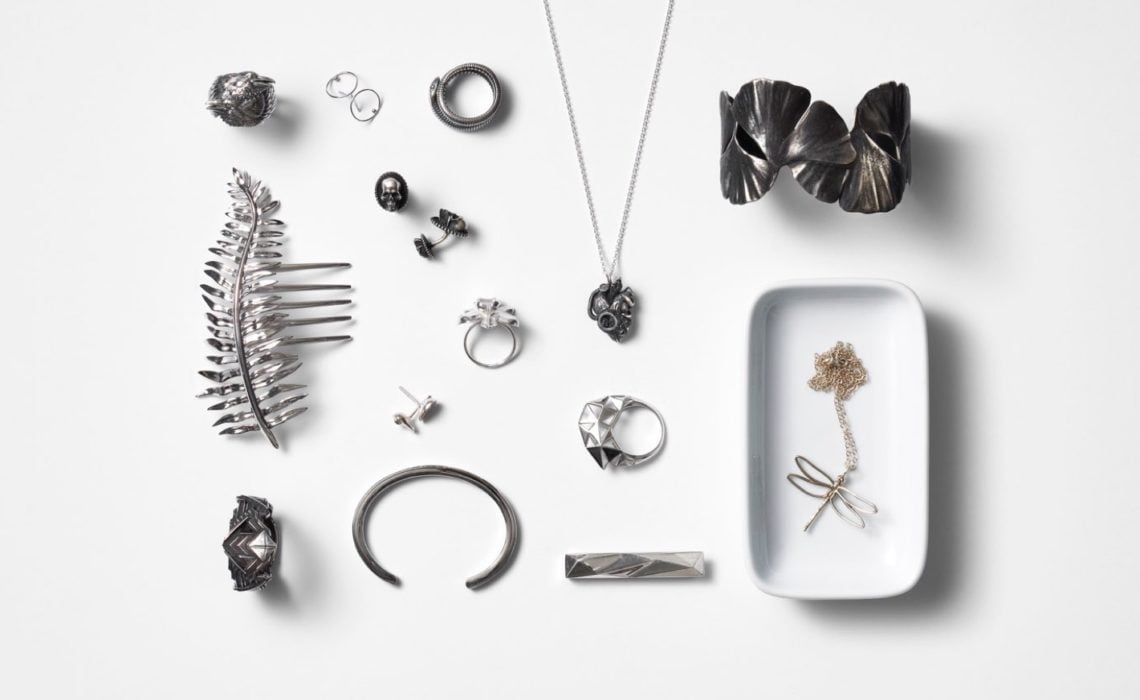
The development of 3D printing technology has allowed for jewelry businesses of any scale to expand their reach in production by making the jewelry making process quicker and easier.
How Jewelers Can Use 3D Printing
To create jewelry in gold, silver, brass or any other metal, jewelers typically need to cast their pieces. In traditional metal casting, a replica and mold of the finished piece would need to be created by hand before the casting process could begin. The use of 3D design can replace a bulk of this time and labor by printing highly precise prototypes, models and molds to facilitate the casting process. Instead of carving a model in wax by hand, the piece can be printed using a wax-like resin in a process called Lost-Wax printing and casting. The printed piece is then attached to a wax tree with other models by sprues and covered in plaster to create the mold. When the plaster mold is heated in an oven the wax melts and disappears. The attention to detail that is made possible by designing the piece using 3D design software means there will be less room for error and therefore time and costs become more efficient.
Jewelry can also be printed in many other materials like versatile plastic, sandstone and ceramics. All of these materials, whether it be metal or plastic, can be made available to customers to choose from for any same piece.
The Values of using 3D Printing Save Time and Costs
One of the greatest upsides to using 3D printing is that designers can spend more time focusing on their creative process while delegating precise and highly detailed execution. Creating a 3D design helps to eliminate laborious steps and costly materials while offering an equal or higher value in the final product.
Focus on Precision, Detail and Creativity: 3D design offers the opportunity for further attention to detail and precision than can be achieved by hand and by printing prototypes with cheaper materials it allows designers to edit and refine to create the best version of their piece they can without sacrificing as much effort.
Meet Customer Needs and Expand Clientele: 3D printing also opens new avenues through e-commerce, as well as the possibility to expand clientele by matching more specific customer needs on an order by order basis. Sizing can easily be altered, customers can choose from a range of materials, and pieces can be personalized as needed. In a world where customers look more and more for custom and one of a kind pieces and expect quick results, 3D printing gives smaller operations the ability to meet the demands of a larger clientele. This also has the potential to eliminate the need for displays or storage, as all pieces can be made to order and shipped directly to customers.
Jewelers can now create more pieces at a lower cost and at an increasingly higher quality and manufacturing can become more flexible and less time consuming. This way more of an emphasis can be placed on the jeweler’s creative process as pressure is removed from production.
How Jewelry Designers Can Shift Into 3D Printing
Any jewelry designer can easily transition into 3D design no matter their skill level due to the range in 3D design programs available. A program like Tinkercad caters to those just getting started, while programs like Rhinogold give more advanced tools for creating unique jewelry. Jewelry designers are able to integrate 3D printing in any capacity that makes the most sense to them. Skilled jewelers can 3D print their wax models and continue casting their pieces themselves while others can simply submit their design to Shapeways and see a finished product. No matter how designers choose to use this technology to boost their business, their unique creativity is always at the forefront of the process.
Want to start creating your own unique jewelry with Shapeways? Upload your designs today!



